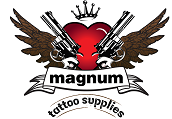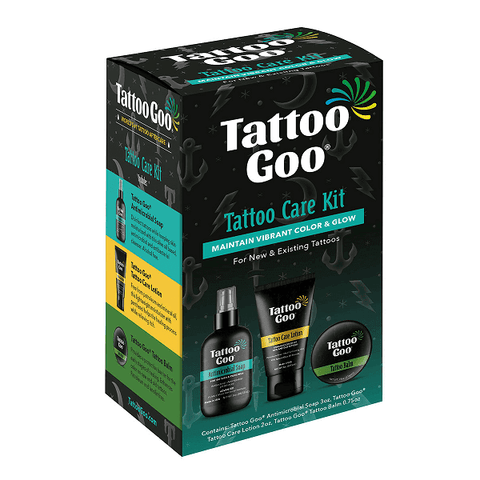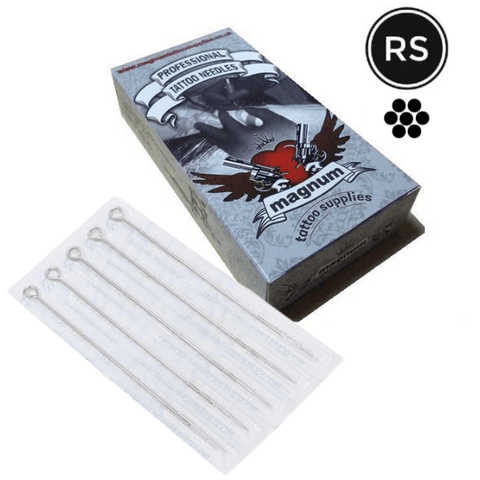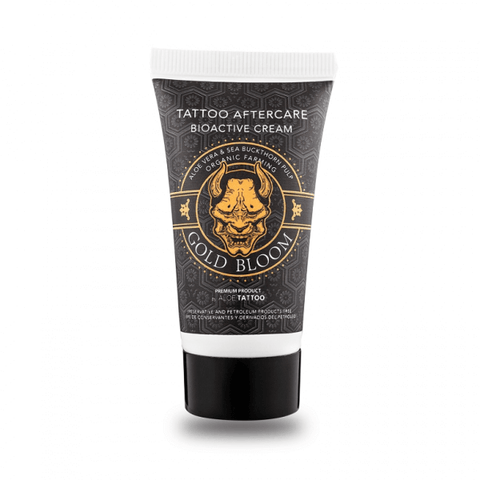Tattoo pro tips: Pre-tattoo, during-tattoo, and post-tattoo tips

Are you a budding tattoo artist struggling to achieve that perfect shade or grapple with the mysteries of aftercare? Or perhaps you're a seasoned ink master seeking new insights to enhance your craft? In the world of tattooing, even the most experienced tattoo artists face their share of challenges.
From mastering the art of clean lines to ensuring painless sessions for clients, the world of tattooing can be a maze of complexities. But fear not, for in this article, we'll unravel the secrets of tattooing with the wisdom of those who know best – experienced tattoo artists. Discover how to elevate your tattooing game to a whole new level.

Pre-tattoo pro tips
Wear dark clothing
As a tattoo enthusiast or artist, it's essential to be prepared for a little mess. No reputable tattoo artist wants to look messy after a tattoo appointment, and clients want to leave without ink stains on their clothes.
Wearing dark-coloured clothing can help conceal any excess ink that may splatter during the tattooing process and prevent staining.
Check your needles for damage
Tattoo needles are the tools of the trade, and their quality can significantly impact the outcome of a tattoo.
Before using them, inspect your tattoo needle closely. Use an eye loupe to check for signs of damage such as bending (burring) or upside-down placement. Ensuring your needles are in top condition is crucial for achieving clean and precise lines.
Keep feet fresh
If your client's tattoo placement requires them to remove their shoes, be mindful of potential foot odour. To address this, consider spraying the entire foot with alcohol before the tattoo session.
This not only helps keep odours at bay but also ensures the tattoo studio is sterile, promoting proper healing. When explaining this to your client, focus on the importance of cleanliness and hygiene rather than mentioning any unpleasant smells.
Use deodorant for stencil application
When working on practice or fake skin or clients with thinner stencil paper, traditional liquid Stencil Stuff may not yield the best results. It can light up and make the design look blurry.
An alternative solution is to use a roll-on deodorant for stencil application. This method can help you achieve sharp and clean lines, ensuring that your tattoo design transfers accurately.

During the tattoo process pro tips
When outlining or creating bold lines, use a round shader or mag needle
"Powerlining" is a technique that allows tattoo artists to create thick, bold lines in their designs. Contrary to what some might think, you don't need a giant liner needle to achieve this effect. In fact, you can use a round shader or mag needle configuration to powerline efficiently.
By using these needle types, you can create bold lines that add depth and impact to your tattoos. Whether it's defining the contours of an intricate design or adding dramatic outlines to a piece, the choice of needle can make all the difference.
Start with the darker ink colours when you tattoo
Colour purity is the holy grail of tattooing. A common mistake is inadvertently contaminating lighter ink with remnants of darker ink, which can result in a "muddy" appearance that detracts from the tattoo's clarity.
To prevent this issue, always start by tattooing with your darkest ink colours and gradually work your way up to the lighter shades. This meticulous approach ensures that each colour retains its vibrancy without any undesirable blending.
Additionally, to keep colours from looking muddy, consider the following techniques:
- Wipe away excess ink from the tattoo in a direction away from the design.
- Apply a thin layer of Vaseline over the tattooed area with lighter colours to protect the pigments.
- Cover finished areas with lighter colours using plastic wrap to shield them from any stray ink during the remainder of the tattoo session.
Gradually blend the tattoo colours to match your skin tone using a flesh-coloured foundation
Achieving seamless transitions between colours, particularly when blending with a client's skin tone, requires a delicate touch. Diluting ink with distilled water may not always yield the desired results, as it can lead to a faded look once the tattoo heals.
Instead, select a flesh-coloured foundation ink that closely matches your client's skin tone. Using this ink for blending allows you to achieve smooth transitions while preserving the vividness of the colours once the tattoo has healed.
Keep in mind that this technique is ideal for coloured tattoos, as black and grey tattoos typically demand a different approach.
To make the tattoo look textured, use three different shades
Texture is the key to making tattoos come alive, lending depth and dimension to your designs. One effective method for creating texture is working with three different shades: a mid-tone, a shadow (in black), and a highlight (in white). This layering technique replicates natural shading and imbues your tattoos with a captivating three-dimensional quality.
Begin by tattooing the midtone, then introduce shadows in black to create depth. Finally, place highlights in white just outside the midtone. This approach will help you achieve intricate texture, making your tattoos truly stand out.
Don't use white ink until you're finishing up the tattoo
White ink is known for its rapid drying time, which can pose challenges during a tattoo session. To work effectively with white ink, it's essential to wait until you're nearing the end of the tattoo session, particularly when adding those final highlights.
Consider employing a round shader for white highlights, as white ink has a tendency to clog in a liner needle. Additionally, using a plastic tube instead of a steel one can help prevent any metal filings from contaminating the white ink, ensuring it maintains its pristine appearance.

Post tattoo pro tips
Communicate clearly
Effective communication with your clients doesn't end when the tattoo machine stops. Aftercare instructions are just as vital as the tattooing process itself. Ensure your clients understand how to take care of their new tattoos.
Explain the importance of cleanliness, proper moisturisation, and sun protection. Provide written aftercare instructions for reference, and encourage your clients to ask questions if they're unsure about anything.
If you want to learn more about keeping new tattoo looking great, don't miss our article "New tattoo aftercare: How to keep your ink looking great."
Suggest high-quality aftercare products
Recommend specific tattoo aftercare products that you trust and have had positive experiences with. High-quality aftercare products can make a significant difference in the healing process.
Provide guidance on the type of moisturiser or ointment to use, emphasising the importance of products that are fragrance-free, alcohol-free, and specially formulated for tattoo aftercare.
Stress the no-go zones
Certain activities can be detrimental to a healing tattoo. Emphasise the importance of avoiding swimming pools, hot tubs, saunas, and excessive exposure to sunlight during the initial healing period.
Explain that chlorine and other chemicals in swimming pools can irritate the skin and cause fading. Direct sunlight can not only fade the tattoo but also slow down the healing process.
Encourage patience
Remind your clients that healing times vary from person to person and that it's normal for tattoos to go through different stages during the healing process. Assure them that some scabbing, peeling, and itching are part of the natural healing cycle.
Encourage patience and discourage picking or scratching the tattoo, as this can damage the body art design and lead to complications.
Follow up and offer touch-ups
Stay connected with your clients even after the tattoo is completed. A follow-up message or appointment to check on the healing progress can go a long way in building trust and rapport.
Offer touch-up sessions if needed. Sometimes, small imperfections or fading may occur during the healing process, and addressing these issues promptly can leave a lasting positive impression on your clients.
Discover more valuable tips and insights in our article about "How to ensure client protection and comfort after tattooing". Building trust and maintaining strong client relationships is key in the tattoo industry. Learn how to excel in this aspect and elevate your tattooing career.
Tattoo tips from Magnum Tattoo Supplies
Tattooing is a complex and multifaceted art form that requires dedication, skill, and a commitment to ongoing learning, making it an ideal journey for tattooing for beginners and aspiring tattoo artists looking to start tattooing. These pro tips from experienced and famous tattoo artists offer valuable insights into the craft, from the importance of cleanliness to the art of shading and beyond.
Whether you're an aspiring tattoo artist or a professional tattoo artist, these tips can help you elevate your skills and provide the best possible tattoo experience for your clients.
- Tags: business tips tattoo pro tips
- Mark Joshua Luz










